
The Power Law: Venture Capital and the Making of the New Future
by
Sebastian Mallaby
Published 1 Feb 2022
“So we hired him.”[54] Assigned the rank of vice president, Squarzini set to work imposing some structure on UUNET’s freewheeling operation. Pretty soon, the urgency of this mission became apparent. In the course of straightening out UUNET’s accounting, a bookkeeper came across a box of unpaid invoices. UUNET had lost track of debts for routers and other gear that amounted to a horrifying $750,000. The sum canceled out half of the capital that UUNET had just raised. Weeks after its $1.5 million Series A, the company was almost out of money. Somebody would have to break this news to UUNET’s investors. They had committed their capital on the basis of financial statements that now turned out to be false; they were not going to be happy.
…
They had committed their capital on the basis of financial statements that now turned out to be false; they were not going to be happy. After all, if UUNET had been a public company, the dramatic restatement of its cash balance would have punished its share price. Likewise, if UUNET had borrowed from a bank, it could not have expected a fresh loan after this sort of embarrassment. UUNET’s prospects now hinged on its venture backers responding in a different way. They would have to take the hit calmly and cough up fresh funds. Otherwise UUNET would run out of working capital. Years later, Barris reflected that if Adams had broken the news of the $750,000 screwup, UUNET’s future might have been precarious.
…
The next month Sidgmore pulled off the extraordinary coup of landing a similar deal with Microsoft’s chief rival in online services, AOL. Having done the equivalent of securing both Coke and Pepsi as clients, UUNET took off exponentially. Three months later, in May 1995, the company went public. Back in 1993, a coin toss might have decided who backed UUNET: the corporate capitalists at Metropolitan Fiber or Accel’s venture capitalists. Now Accel stood to be fabulously rewarded. UUNET’s flotation gave the company a valuation of $900 million, and then, in a wonderful full-circle ending, Metropolitan Fiber made its second appearance, buying control of UUNET at a valuation of $2 billion. Through luck more than brilliance, Accel found itself pocketing fifty-four times its original stake, a profit of $188 million.
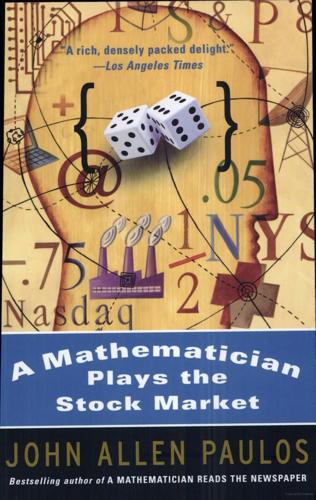
A Mathematician Plays the Stock Market
by
John Allen Paulos
Published 1 Jan 2003
He excuses himself and goes to his study to make a secret telephone call to an apartment on Central Park West that he’s just purchased for his new mistress. 5 Value Investing and Fundamental Analysis I was especially smitten with WorldCom’s critical Internet division, UUNet. The Internet wasn’t going away, and so, I thought, neither was UUNet or WorldCom. During this time of enchantment my sensible wife would say “UUNet, UUNet” and roll her pretty eyes to mock my rhapsodizing about WorldCom’s global IP network and related capabilities. The repetition of the word gradually acquired a more general anti-Pollyannish meaning as well. “Maybe the bill is so exorbitant because the plumber ran into something he didn’t expect.” “Yeah, sure. UUNet, UUNet.” “Smitten,” “rhapsodizing,” and “Pollyanna” are not words that come naturally to mind when discussing value investing, a major approach to the market that uses the tools of so-called fundamental analysis.
…
Bernie Ebbers, the founder and former CEO, is now viewed by many as a pirate, but then he was seen as a swashbuckler. I had read about the company, knew that high-tech guru George Gilder had been long and fervently singing its praises, and was aware that among its holdings were MCI, the huge long-distance telephone company, and UUNet, the “backbone” of the Internet. I spend a lot of time on the net (home is where you hang your @) so I found Gilder’s lyrical writings on the “telecosm” and the glories of unlimited bandwidth particularly seductive. I also knew that, unlike most dot-com companies with no money coming in and few customers, WorldCom had more than $25 billion in revenues and almost 25 million customers, and so when several people I knew told me that WorldCom was a “strong buy,” I was receptive to their suggestion.
…
They also reinforce the impression that the market is a different sort of beast than that usually studied by social scientists or, perhaps, that social scientists have been studying these beasts in the wrong way. I should note that my interest in networks and connectivity is not unrelated to my initial interest in WorldCom, which owned not only MCI, but, as I’ve mentioned twice already, UUNet, “the backbone of the Internet.” Obsessions fade slowly. Economic Disparities and Media Disproportions WorldCom may have been based in Mississippi, but Bernie Ebbers, who affected an unpretentious, down-home style, wielded political and economic influence foreign to the average Mississippian and the average WorldCom employee.

Alpha Girls: The Women Upstarts Who Took on Silicon Valley's Male Culture and Made the Deals of a Lifetime
by
Julian Guthrie
Published 15 Nov 2019
But the two couldn’t raise any VC money, and their company had been merged into UUNet, a similar commercial Internet access provider. As Magdalena and Lynch walked into the conference room at Menlo Ventures, she was struck by something unusual and a bit out of place. But it wasn’t the 1970s furniture or art. In any event, she had a presentation to give and began concentrating on projecting what one former boss called her “delicious eff you attitude.” She shook hands, hugged one of the partners, John Jarve, who had invested in UUNet, and pulled her PowerBook Duo and docking station from her briefcase.
…
Entrepreneurs and VCs used words like gold rush and land grab to describe the once-in-a-lifetime opportunity to get rich. Turf battles escalated between banks vying for hot initial stock offerings and merger deals. VCs chased after fresh-faced, wide-eyed dot-com entrepreneurs. Companies such as At Home and Real Networks had impressive IPOs, as did Verisign, Exodus, CyberCash, UUNet, and Inktomi. Companies like Priceline, eToys, Pets.com, GoTo.com, and Webvan experienced dazzling growth—as measured by eyeballs, page use, and unique customers. Sonja was at work when she got a call from her friend Kim Davis, a venture capitalist at IDG Ventures in San Francisco. Kim had earned her bachelor’s degree at Stanford and had been a year behind Sonja at Harvard Business School.
…
Magdalena removed her glasses and scarf and took a seat. She wore a dark suit and a pink Gap T-shirt. “I know you invest money, but I don’t really have any idea what a venture partner does,” she said. She had turned down VC funding for CyberCash, opting instead to forge partnerships with existing companies, including Intel and Cisco. (Her stock in UUNet had also paid off when MFS Communications acquired the company for more than $2 billion.) Krausz, who like Magdalena had a degree in electrical engineering from Stanford, talked about the role of a venture capitalist as both coach and mentor to CEOs; as someone who built great leadership out of untested mettle; and who helped disrupt the status quo by using new technologies to solve old problems.

Tubes: A Journey to the Center of the Internet
by
Andrew Blum
Published 28 May 2012
But strike from your mind any images of bulldozers steaming across the Pennsylvania countryside laying cable—although those would come soon enough. These early long-distance and local networks still worked across the existing phone lines, with specialized equipment installed on either end. By the early 1990s, the trickle became a wave, as companies like MCI, PSI, UUNet, MFS, and Sprint attracted increasing investment dollars—and used them to dig their own trenches and fill them with the new technology of fiber optics, which had been commercialized in the 1980s. The network of networks was accumulating an infrastructure of its own. It began to colonize key places around the world—indeed, the places where it still predominantly exists: suburban Virginia and Silicon Valley, California; London’s Docklands district; Amsterdam, Frankfurt, and downtown Tokyo’s Otemachi district.
…
For a time, a few of the early Internet providers interconnected their networks inside a Sprint building in northwest Washington, but it was an imperfect solution. Sprint didn’t like its competitors setting up shop inside its building (especially when Sprint didn’t have a business setup to properly charge them for it). And for the Internet providers themselves—companies like UUNET, PSI, or Netcom—it was expensive to be there, because of the cost of leasing local data lines back to their own office or network POP (or “point of presence”). MFS offered a solution: it would turn its offices into a hub. The company already had plenty of existing local data lines, which it would use to tether each of the Internet providers, like dancers around a maypole.
…
But for the plan to be viable a handful of the Internet providers had to commit simultaneously—or else it would be a roundabout in the middle of nowhere. A group of them made the decision over lunch one day in 1992 at the Tortilla Factory in Herndon, Virginia. At the table were Bob Collet, who ran Sprint’s network; Marty Schoffstall, cofounder of PSI; and Rick Adams, founder of UUNET (who would later make hundreds of millions of dollars taking it public). Each of these networks operated independently, but they knew full well they were useless without one another. The Internet was still for hobbyists—an eccentric subset of the population, composed mostly of people who had used the network in college and wanted to keep going.
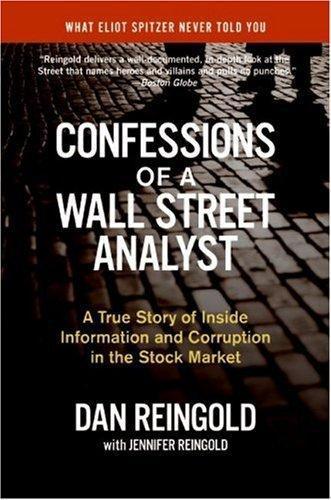
Confessions of a Wall Street Analyst: A True Story of Inside Information and Corruption in the Stock Market
by
Daniel Reingold
and
Jennifer Reingold
Published 1 Jan 2006
He called it “IP,” or Internet protocol, the new technology by which Internet information would flow through the world’s communications networks. Crowe’s notion was that the Internet was going to change the world, and that MFS and WorldCom would transmit much of the world’s Internet traffic. Just prior to WorldCom’s offer, MFS had quietly acquired a small, relatively unknown company called UUNet (pronounced “you you net”) for $2 billion. UUNet was the country’s largest “Internet service provider” and was growing like wildfire. I was mystified. Although telecommunications and the Internet would later become as linked as Siamese twins, I didn’t quite see the connection between the two. I made a mental note to someday figure out exactly what he was talking about.
…
Michael Armstrong, Chairman and CEO, from November 1997 to November 2002 Dan Somers, CFO, 1997–1999 John Zeglis, General Counsel and later CEO of AT&T Wireless Chuck Noski, CFO, 2000–2003 British Telecom (BT) Iain Vallance, Chairman Sir Peter Bonfield, CEO Robert Brace, CFO Global Crossing Gary Winnick, founder, Chairman Bob Annunziata, CEO (former CEO of Teleport and President of AT&T’s business services unit) Leo Hindery, CEO (former President and CEO of Telecommunications, Inc. and of AT&T’s broadband and Internet division) Tom Casey, CEO David Walsh, President IDB Jeffrey Sudikoff, CEO Ed Cheramy, President Rudy Wann, CFO Qwest (including its founding shareholder, The Anschutz Corporation) Phil Anschutz, Chairman of Qwest and the Anschutz Corporation Cy Harvey, President of the Anschutz Corporation Joe Nacchio, CEO of Qwest, former AT&T executive Robin Szeliga, CFO of Qwest Robert Woodruff, CFO of Qwest Lee Wolfe, Vice President, Investor Relations WorldCom (originally LDDS) Bernie Ebbers, Chairman and CEO Charles Cannada, CFO Scott Sullivan, Treasurer, then CFO John Sidgmore, Vice Chairman, founder of UUNet Blair Bingham, investor relations manager OTHER TELECOM EXECUTIVES Jim Crowe, CEO of MFS, later CEO of Level 3 Communications Bill Esrey, CEO and Chairman of Sprint Chris Gent, CEO of Vodafone Sam Ginn, CEO and Chairman of AirTouch Communications Chuck Lee, CEO and Chairman of GTE Dick Notebaert, CEO and Chairman of Ameritech, later CEO of Qwest Fred Salerno, CFO of Bell Atlantic, subsequently Verizon Ivan Seidenberg, CEO and Chairman of Bell Atlantic, subsequently Verizon Oren Schaffer, CFO of Ameritech, later CFO of Qwest Sol Trujillo, CEO and Chairman of US West Ed Whitacre, CEO and Chairman of SBC Communications MEDIA Maria Bartiromo, CNBC reporter Rebecca Blumenstein, Wall Street Journal reporter covering telecom companies David Faber, CNBC reporter and anchor Charles Gasparino, Wall Street Journal reporter covering Wall Street firms, now at Newsweek Gil Kaplan, founder of Institutional Investor magazine Prologue TUESDAY, MARCH 15, 2005 IT WAS JUDGMENT DAY for Bernie Ebbers, but no one knew it yet.
…
If the demand for this stuff was as dramatic as Jim Crowe and others were saying, perhaps it wasn’t just the Baby Bells that would be the winners; perhaps everyone would win. Still, I was skeptical that anything could grow at the rate that some were predicting. And the predictions were shocking. In 1997, Michael O’Dell, the chief scientist at UUNET, the Internet services provider that WorldCom had bought a year earlier, was the first of many to proclaim that overall Internet traffic was doubling every 100 days. Later that same year, at an analyst meeting for WorldCom, John Sidgmore, WorldCom’s vice-chairman, announced that demand for bandwidth was doubling every 3.5 months.

Internet for the People: The Fight for Our Digital Future
by
Ben Tarnoff
Published 13 Jun 2022
At minimum, the list of US-based Tier 1 networks include those run by AT&T, Verizon, Lumen Technologies, GTT Communications, Sprint, and Zayo Group. (Comcast essentially operates a Tier 1 network because it reaches the whole US through peering, though it must purchase transit overseas.) The five backbone providers in 1995 were UUNET, ANS, SprintLink, BBN, and MCI. In 1996 UUNET was acquired by WorldCom, which was bought by Verizon in 2006; SprintLink continues to operate as a Tier 1 network owned by Sprint; BBN’s internet assets would be acquired by Level 3 Communications (now Lumen) in 2003; and MCI was acquired by WorldCom in 1998, eight years before Verizon’s acquisition of WorldCom. 25, The terms of privatization … Secrecy and lack of regulation of backbone interconnections: Shah and Kesan, “The Privatization of the Internet’s Backbone,” 102–3; Kesan and Shah, “Fool Us Once Shame on You,” 147–51; Abbate, “Privatizing the Internet,” 18; April Glaser and Seth Schoen, “Peering into the Soft Underbelly of Net Neutrality,” Electronic Frontier Foundation, February 19, 2014; Martin Hannigan, “Interconnection Agreements at Scale: Secret or Simple?
…
., 195–205; Abbate, “Privatizing the Internet,” 10–19; Kesan and Shah, “Fool Us Once Shame on You,” 111–43; Shah and Kesan, “The Privatization of the Internet’s Backbone Network,” 93–106. 16, The move enraged the rest … “Giving a federal …”: Quoted in Kesan and Shah, “Fool Us Once Shame on You,” 125. 17, The goal was to promote … The five corporations that became the backbone providers in 1995 were UUNET, ANS, SprintLink, BBN, and MCI, with a combined market share of 90 percent; see Shah and Kesan, “The Privatization of the Internet’s Backbone Network,” 103. Death of nonprofit regional networks: Newman, Net Loss, 74. 18, What’s striking about the privatization … Depth of consensus on privatization: Kesan and Shah, “Fool Us Once Shame on You,” 117.

Someone comes to town, someone leaves town
by
Cory Doctorow
Published 1 Jul 2005
"What's at 151 Front?" "TorIx -- the main network interchange for the whole city! We stick an antenna out a window there and downlink it into the cage where UUNet and PSINet meet -- voila, instant 11-megabit city-wide freenet!" "Where do you get the money for that?" "Who said anything about money? How much do you think UUNet and PSI charge each other to exchange traffic with one another? Who benefits when UUNet and PSI cross-connect? Is UUNet the beneficiary of PSI's traffic, or vice versa? Internet access only costs money at the edge -- and with a mesh-net, there is no edge anymore. It's penetration at the center, just like the Devo song."
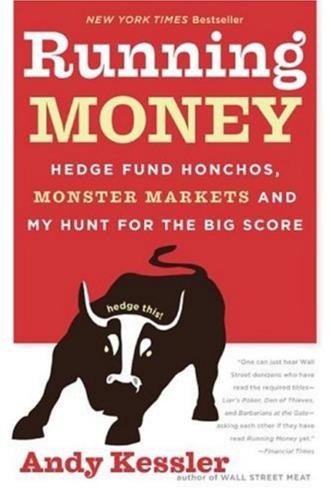
Running Money
by
Andy Kessler
Published 4 Jun 2007
And Clark is going to be an even more insufferable prick.” “Gotta get over it, Bob,” I said. “No I don’t.” • • • Clark’s Outpost 199 Luckily, those Cisco routers were around. Not only did routers hook LANs to wide area networks, or WANs, that comprised the Internet, but Cisco routers actually became the backbone of the Internet. New companies like UUNET and America Online would use Cisco routers in the middle of their networks to move packets around, as well as at the edge of their networks to connect to banks of dial-up modems so users could call in and connect. Marc Andreessen took advantage of these routers. For Cisco, the effect was magic. Browsers blew away the 80-20 rule.
…
See Taiwan Semiconductor Manufacturing Company Tsuji, Haruo, 157–58 turbine engine, 94–95 Tut Systems, 145, 217, 219 Tyco, 290 UCLA, 184, 185, 187 unfair competitive advantage, 45, 248 Union Carbide, 236 Uniphase, 176, 177 United Airlines, 246, 292, 293 United Auto Workers, 241, 243 University of California, Los Angeles, 184, 185, 187 312 Index University of California, Santa Barbara, 187 University of Hawaii, 186–87 University of Illinois, 187, 195, 197, 199 University of Utah, 187 UNIX, 191 Upside (magazine), 40, 195 US Air, 292, 293 uucp, 191 UUNET, 199 Valentine, Don, 42, 45, 67, 80, 81, 96, 205, 212 VCs. See venture capitalists venture capitalists, 130, 138, 139, 144–45, 194, 197–98, 201 VentureStar, 3 Verity, 97 Versant, 60–63, 96 Vietnam, 281 Visigenic, 106 Vonderschmitt, Bernie, 129–31 voodoo economics, 276 Wall Street Journal, 216, 259 Wal-Mart, 78, 255 WANS, 188, 199 Warner Brothers, 71 warships, 95 watches, digital, 127–28 waterfalls (big-time trends), 73, 77–79, 225, 279, 295 Water Frame, 65 Watt, James, 53–55, 57, 65, 66, 78, 89, 91, 95, 125–26, 190, 268 wealth, 278, 280 creation of, 248, 257, 275–76, 296 family offices and, 109–10 intellectual property and, 263 meaning of, 233–35 weaving, 64–65, 66 Web.
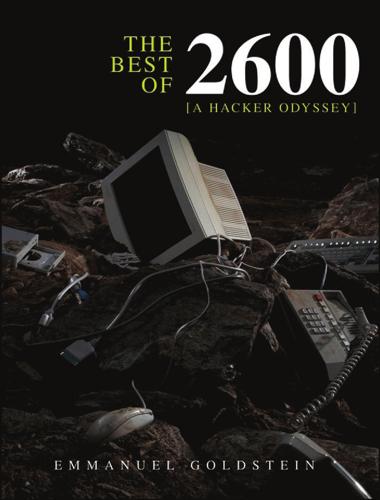
The Best of 2600: A Hacker Odyssey
by
Emmanuel Goldstein
Published 28 Jul 2008
Many backbones at 94192c09.qxd 6/3/08 3:32 PM Page 305 The Computer Revolution first demanded “hot potato routing,” so as to shift traffic away from their networks onto the network to which packets were bound as soon as possible. However, the opposite demand is often the case with smaller backbones (such as Exodus): They’re told to do “cold potato” routing, meaning that Exodus is expected to deliver traffic bound for UUNet at the nearest UUNet peering point to the IP for which the traffic is bound. Meanwhile, UUNet does “hot potato” routing, shifting Exodus traffic to their network as quickly as possible! Meanwhile, while all of this is going on, people are buying—and expecting—access to the Internet. This is an important point. My mother is, for her $19.95 per month, not buying access to CW.NET’s network.
…
By far the largest backbone is the legacy MCI.NET, which is now operated by Cable and Wireless and was renamed CW.NET. Cable and Wireless also owns cwix.net, which they are slowly integrating into CW.NET. As of this writing, MCI Worldcom is the second largest backbone operator (though catching up quickly), operating uu.net (formerly alter.net), wcom.net (formerly compuserve.net), and ans.net (previously owned by AOL, and before that ANS CO+RE Systems). And in a distant third place is Sprint. There are a number of smaller backbone providers as well—AGIS, Digex, GlobalCenter, Exodus, CRL, netaxs, and others. Many of these, paradoxically, lease fiber trunk capacity from MCI Worldcom (this has obviously led to friction, as the bandwidth provider of many backbones is also a major competitor).
…
Customers are justifiably angry if they are unable to reach certain points on the Internet, or if the performance is awful. This puts backbones between a rock and a hard place. Those providers who are clued seem the most likely to actively seek multiple peering points with multiple providers, and PSI is a market leader in this regard—they’ll peer with anyone operating a backbone, free of charge. Others, such as UUNet, are demanding that smaller providers purchase circuits from them at regular customer rates until they meet certain criteria (which seems to change frequently). And finally, the MAEs and NAPs are collapsing under their own weight. They handle so much traffic that the majority of “net lag” is introduced at these peering points.
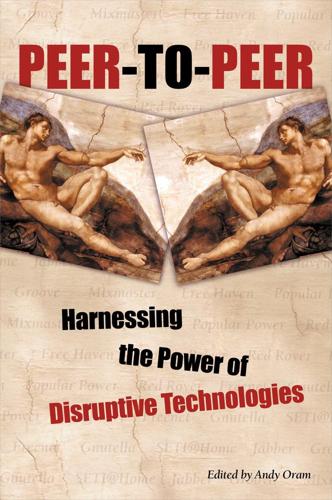
Peer-to-Peer
by
Andy Oram
Published 26 Feb 2001
Over time, though, it became clear that some sites were better connected than others; they came to form a kind of de facto “Usenet backbone.” One of the chief sites, seismo, a computer at the U.S. Geological Society, was run by Rick Adams. By 1987, the load on seismo had become so great that Rick formed a separate company, called UUnet (http://www.uu.net), to provide connectivity services for a monthly fee. As the UUCPnet was replaced by the newly commercialized Internet, UUnet added TCP/IP services and became the first commercial Internet service provider. ISPs create a layer of hierarchy and centralization even though the IP routing infrastructure of the Internet is still peer-to-peer. Internet routers act as peers in finding the best route from one point on the Net to another, but users don’t find each other directly any more.
…
Uniform Resource Indicators (see URIs) unique identifiers and metadata, Foundations of resource description: Unique identifiers United States and legal status of ISPs, Precedents and parries Universal Description, Discovery, and Integration (UDDI), Web services and content syndication unsolicited email (see junk mail) Update operation (Publius), Update operation censoring documents with, Using the Update mechanism to censor–Using the Update mechanism to censor upload/download ratios on bulletin boards, Early reputation systems online URIs (Uniform Resource Indicators) Freenet, Key types metadata and, Foundations of resource description: Unique identifiers URL, Publius (see Publius URL) Usenet, Usenet–Usenet centralization and decentralization, Mixing centralization and decentralization: Usenet, email, and IP routing Eternity Usenet and, Eternity Usenet evolution of decentralized system, Decentralization integrating local and global control, Social solutions: Engineer polite behavior remailers and, Mixmaster Remailers–General discussion users adding value to systems, The Cornucopia of the Commons–The commons adopting peer-to-peer applications, Peer-to-peer is a horseless carriage filling shared databases, Ways to fill shared databases–Napster: Harnessing the power of personal selfishness intense interest in SETI@home, Human factors maximizing contributions from, The Cornucopia of the Commons–The commons preferring HTML over CD-ROMs, Users reward simplicity refusing to accept per-unit prices, 30 million Britney fans does not a revolution make UUCP (Unix-to-Unix-copy protocol), Usenet UUCPnet, Mixing centralization and decentralization: Usenet, email, and IP routing UUIDs of messages (Gnutella), Message broadcasting UUnet, Mixing centralization and decentralization: Usenet, email, and IP routing V verifying bandwidth allocation, Other considerations from the case study coins, Anonymous macropayment digital cash schemes digital signatures, Signature verification downloaded files, Message digest functions transactions, Aspects of a scoring system VeriSign (certificate authority), Codifying reputation on a wide scale: The PGP web of trust, Why secure email is a failure Vinge, Vernor, Reliability with anonymity VIP Reference (U.S.), Acknowledgments virtual private networks (VPNs), extending security off-site, Groove versus email volunteer databases, Ways to fill shared databases–Napster: Harnessing the power of personal selfishness volunteers, server, Denial of service attacks, Mojo Nation and Free Haven, Freenet W W3C (World Wide Web Consortium) and metadata vision, Resources and relationships: A historical overview Wagner, David, Nonparallelizable work functions Waldman, Marc, Contents of this book, Publius–Publius in a nutshell, Trust–Conclusions, Acknowledgments, Contributors Wall of Shame (Zeropaid.com), Gnutella pseudoanonymity, Gnutella Watts, Duncan, The small-world model–The small-world model web access, Publius (see HTTP proxy) web browsers as berClient, Why not an ÜberClient?
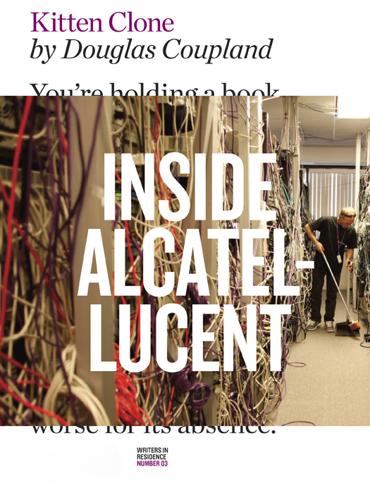
Kitten Clone: Inside Alcatel-Lucent
by
Douglas Coupland
Published 29 Sep 2014
< br > The last person I meet in the Paris office is Johnson Agogbua, Head of Application Enablement Solutions. Because it’s the end of the day, I’m a bit fried, and Agogbua is also tired, perhaps from running too many marathons (he’s a runner), or perhaps from too much travelling. Since graduating from Drexel University in 1988, he’s worked with Salomon Brothers, UUNET and various optical switching networks in Africa, and has been commuting between Fairfax, Virginia and Mumbai. He started his own cloud storage company (there’s a job description that didn’t exist a decade ago) and joined Alcatel-Lucent in 2008, brought in by Ben Verwaayen. “I’ve seen too much pollution,” he says about his global travels.
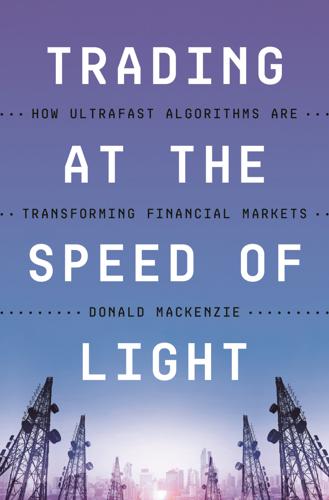
Trading at the Speed of Light: How Ultrafast Algorithms Are Transforming Financial Markets
by
Donald MacKenzie
Published 24 May 2021
T-1 (Transmission System 1) was the original 1962 AT&T digital-transmission specification, which was later reimplemented for optical fiber. T-2 and T-3 are higher-capacity versions. 6. One interviewee, TO, tells me that a crucial component of the gold line was an old cable laid several years earlier by the pioneering Internet service provider UUNET. The cable’s transmission capacity was limited, he tells me, and to save money UUNET had simply buried it in the soil, rather than laying it in conduits as was normal practice, but its route made it faster than the alternatives. I have, however, been unable to find independent confirmation of this. 7. In fact, because the location was so vital, Spread seems simply to have offered over $100,000, rather than the owners demanding that. 8.
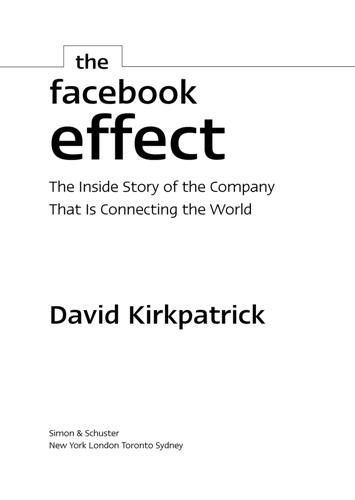
The Facebook Effect
by
David Kirkpatrick
Published 19 Nov 2010
Zuckerberg talked it out with him by phone and they pretty much wrapped up a deal that didn’t include a board seat. The Accel Partners venture capital firm in Palo Alto was looking for a big new score. It had done a number of hugely successful investments in the previous decade. It had made its mark in the 1990s with a series of big telecommunications and software investments that paid off, like UUnet, Macromedia, RealNetworks, and Veritas. Now Internet opportunities were reemerging, but it didn’t have a major consumer Net play. Some in Silicon Valley were muttering that Accel had lost its mojo. In the aftermath of the dot-com crash of 2001–2002, Accel had reduced the size of its funds, returning money to investors unused.
…
., 187, 209 Time Warner, 164, 187 Tim Hortons, 263–64 Tipping Point, The (Gladwell), 103 Tocqueville, Alexis de, 223 Top Gun, 57, 98 “trance,” 93 Tribe.net, 46–47, 72, 73, 75, 107, 228 Tripod, 67 Trounson, Rebecca, 110 Troy, 97 TRUSTe, 209 Turkey, 16, 276, 281, 290–91 TweetDeck, 305, 315 Twitter, 6, 8, 203, 289, 294, 296, 297, 304–5, 310, 311–12, 317, 326, 329, 333 Understanding Media: The Extension of Man (McLuhan), 332 “unfriend,” 334 Unilever, 272 United Arab Emirates, 279 United Kingdom, 16, 275, 291 Universal Face Book, 79 Uribe, Alvaro, 1–2, 5 Usenet, 66 UUnet, 114 Van Natta, Owen, 161, 164, 168, 170, 178–79, 182, 238, 239, 251, 322 in departure from Facebook, 268 investors and, 236 in meeting with Microsoft, 240–241, 242, 243, 244 at MySpace, 268, 281 open registration and, 196 on platform strategy, 217–18 Yahoo’s negotiations with, 183, 184, 186 VentureBeat blog, 166 venture capitalists, 41, 46, 48, 53, 70, 87–88, 95–96, 104–5, 109, 112, 113–27, 170, 229, 236, 245, 246 Venuto, Steve, 88, 99, 146, 147 Veritas, 114, 130 Viacom, 113, 125, 159–60, 162, 164, 166–71, 178, 179, 182, 186 Victoria’s Secret, 141 Vietnam, 16 Vigil, Hank, 242 Virgil, 138 virtual community, 67 Visa, 264 Visual Bookshelf, 231 Vitamin Water, 264–65 VKontakte, 284–85 Vogelstein, Fred, 325 wall, 3, 93, 206, 288, 303, 310 Wall Street Journal, 245 Wal-Mart, 115, 176 Warhol, Andy, 206 Warner Bros.
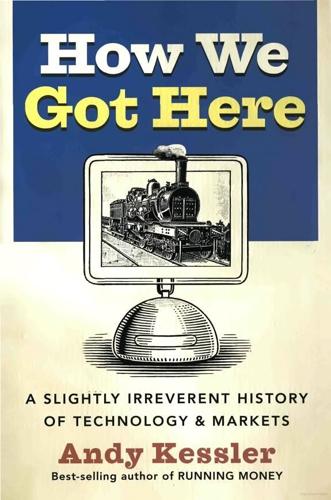
How We Got Here: A Slightly Irreverent History of Technology and Markets
by
Andy Kessler
Published 13 Jun 2005
It was the 80-20 rule, 80% of traffic stayed local, and 20% had to go through a router to interconnect to another network. These same routers were also critical to the growth of the Internet. Not only did routers hook LANs to wide area networks, or WANs, that made up the Internet, but increasingly, cisco routers became the Internet’s backbone. New companies like UUNET and America OnLine would use cisco routers in the middle of their networks to move packets around, as well as at the edge of their 152 HOW WE GOT HERE networks to connect to banks of dialup modems so users could call in and connect. In 1991, a physicist at the Particle Physics Institute CERN in Geneva, Tim Berners-Lee was tired of the hassle involved in sharing research amongst scientists.
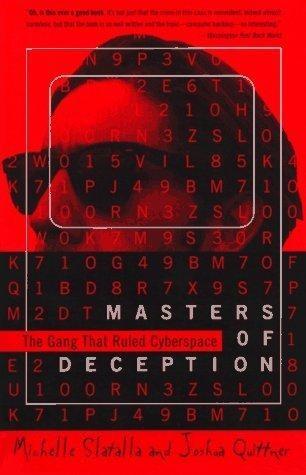
Masters of Deception: The Gang That Ruled Cyberspace
by
Michelle Slatalla
and
Joshua Quittner
Published 15 Jan 1995
2400 baud login: dentist dentist's Password: xxxxxxx The current time is 2l: 03 SECURITY Password: UNIX System V Release 3. 51m modnet Copyright (c) 1984, 1986, 1987, 1988 AT&T All Rights Reserved Last login: No mail. MODNET MODNET M O O D D N MODNET UNIX /SYSTEM V O N E E T T MODNET MODNET M Your mailing address is: modnet!dentist@uunet.uu.net Extension 227 has 0 voice mail messages. Extension 911 has 0 voice mail messages. modnet$ That last line is the prompt. It's prompting the Comsec boys to issue a command. Usually, the first command you type whenever you get inside a UNIX system is: ls That command lists all the subdirectories and files and tells whether you, the user, are authorized to read them.
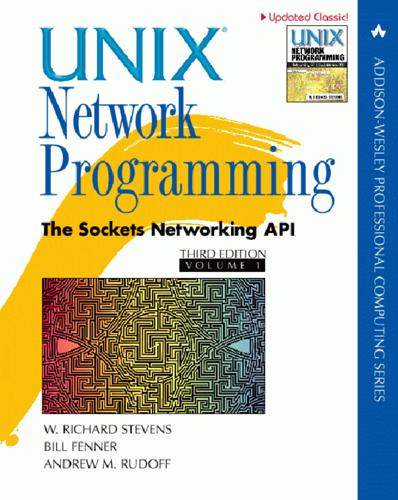
UNIX® Network Programming, Volume 1: The Sockets Networking API, 3rd Edition
by
W. Richard Stevens, Bill Fenner, Andrew M. Rudoff
Published 8 Jun 2013
Also notice that even though this host has an IPv6 address, only the IPv4 address is returned. 310 Name and Address Conversions Chapter 11 Next is a Web server with multiple IPv4 addresses. freebsd % hostent cnn.com official hostname: cnn.com address: 64.236.16.20 address: 64.236.16.52 address: 64.236.16.84 address: 64.236.16.116 address: 64.236.24.4 address: 64.236.24.12 address: 64.236.24.20 address: 64.236.24.28 Next is a name that we showed in Section 11.2 as having a CNAME record. freebsd % hostent www official hostname: linux.unpbook.com alias: www.unpbook.com address: 206.168.112.219 As expected, the official hostname differs from our command-line argument. To see the error strings returned by the hstrerror function, we first specify a nonexistent hostname, and then a name that has only an MX record. freebsd % hostent nosuchname.invalid gethostbyname error for host: nosuchname.invalid: Unknown host freebsd % hostent uunet.uu.net gethostbyname error for host: uunet.uu.net: No address associated with name 11.4 gethostbyaddr Function The function gethostbyaddr takes a binary IPv4 address and tries to find the hostname corresponding to that address. This is the reverse of gethostbyname. #include <netdb.h> struct hostent *gethostbyaddr(const char *addr, socklen_t len, int family); Returns: non-null pointer if OK, NULL on error with h_errno set This function returns a pointer to the same hostent structure that we described with gethostbyname.
…
Contents Debugging Techniques System Call Tracing 891 Standard Internet Services sock Program 893 Small Test Programs 896 tcpdump Program 896 netstat Program 896 lsof Program 897 891 893 Miscellaneous Source Code unp.h Header 899 config.h Header 904 Standard Error Functions 899 910 Solutions to Selected Exercises 913 Bibliography 947 Index 955 Foreword When the original text of this book arrived in 1990, it was quickly recognized as the definitive reference for programmers to learn network programming techniques. Since then, the art of computer networking has changed dramatically. All it takes is a look at the return address for comments from the original text (‘‘uunet!hsi!netbook’’) to make this clear. (How many readers will even recognize this as an address in the UUCP dialup network that was commonplace in the 1980s?) Today, UUCP networks are a rarity and new technologies such as wireless networks are becoming ubiquitous! With these changes, new network protocols and programming paradigms have been developed.
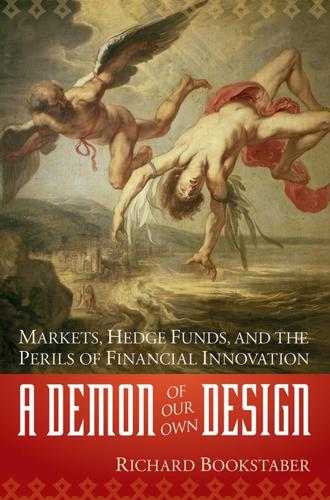
A Demon of Our Own Design: Markets, Hedge Funds, and the Perils of Financial Innovation
by
Richard Bookstaber
Published 5 Apr 2007
LDDS was on the feeding end, acquiring one entity after another: Advantage Companies in 1989, Advanced Communications in 1992, Resurgens Communications Group, and Metromedia Communications in 1993 to become the fourth largest long-distance network in the United States. In the mid1990s, LDDS acquired IDB, an international network, and was renamed WorldCom. It then acquired Williams Telecommunications, MFS, and UUNet, an Internet backbone. But all of that paled to what was about to emerge. In the aftermath of the planned merger with British Telecom, which failed even after MCI agreed to cut the $22 billion deal price by nearly 20 percent, Ebbers made a run in late 1997. Initially valued at $30 billion, his bid rose to nearly $40 billion during the ensuing war with GTE.
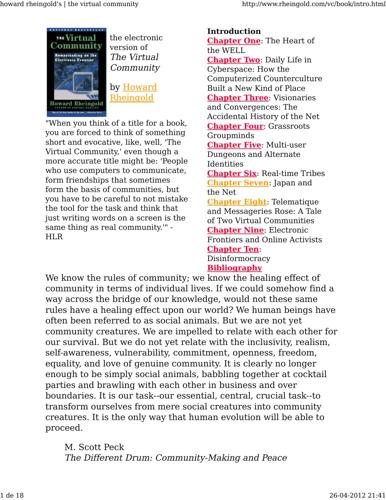
Howard Rheingold
by
The Virtual Community Homesteading on the Electronic Frontier-Perseus Books (1993)
Published 26 Apr 2012
USENET works just fine for scientists; there is no reason why it can't be used as fruitfully by governments, mass-media and financial circles. Vadim Antonov Berkeley Software Design, Inc. Here is a request for information, similar to the Experts on the WELL topic. Many postings like this use Usenet as a living database: Newsgroups: rec.crafts.textiles,alt.sewing Path: well!uunet!gatech!utkcs2!athena.cas.vanderbilt.edu!vusl From: vusl@athena.cas.vanderbilt.edu (VU Science Library) Subject: Social History of Sewing Organization: Mathematics, Vanderbilt University, Nashville I am interested in the history of creating clothing. I have seen several books on what clothes of a certain period looked like.
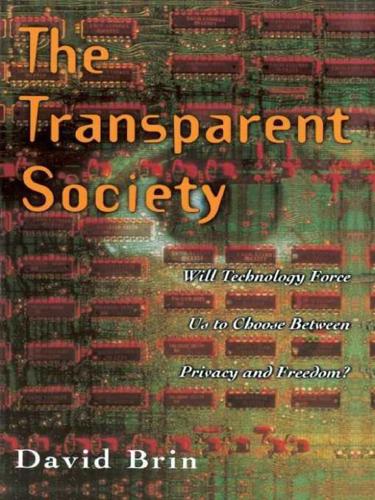
The Transparent Society: Will Technology Force Us to Choose Between Privacy and Freedom?
by
David Brin
Published 1 Jan 1998
A more reasonable hypothesis may be that some of those who consented to creating the nascent Internet were influenced by Vannevar Bush, and had an inkling that they were midwifing something that might ultimately distribute authority rather than concentrate it. The critical moment came when a decision was made to let private networks interconnect with the governmentʼs system. Steve Wolff of the National Science Foundation presided over this delicate era, as systems like Uunet, Csnet, and the anarchic Usenet linked up, taking matters beyond the point of no return. Whether it was fostered by visionary thinking or pure serendipity, the chief “designer” of this astonishingly capable and flexible system has clearly been the system itself. Some even say it illustrates the post-Darwinian principle of “pre-adaptation,” under which traits that served an organism for one purpose may emerge later as the basis for entirely new capabilities.